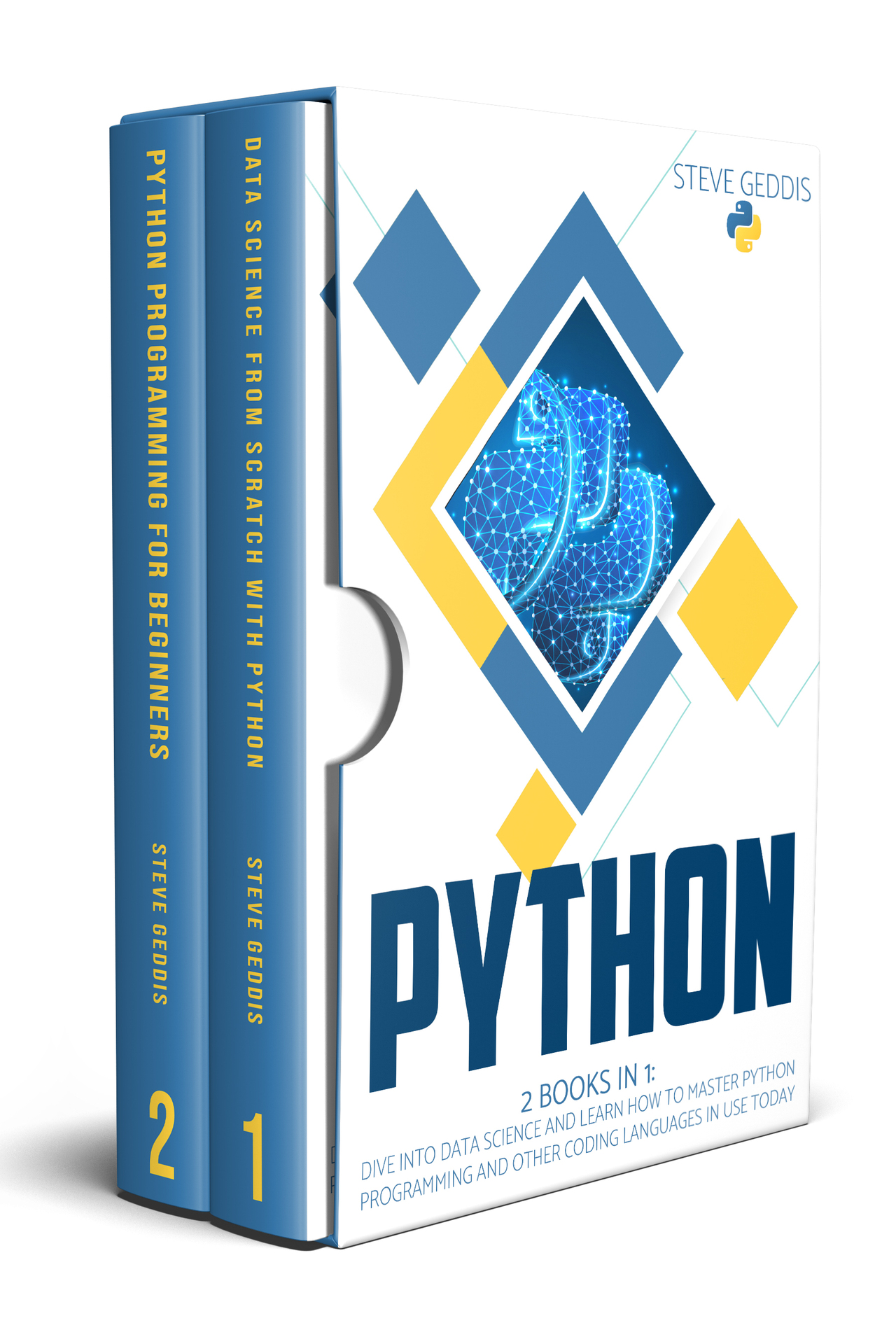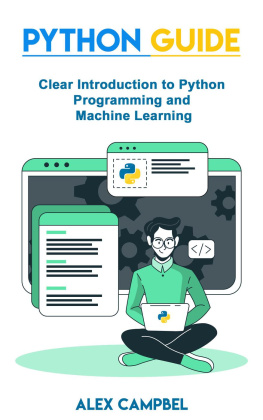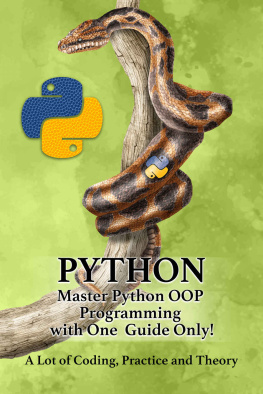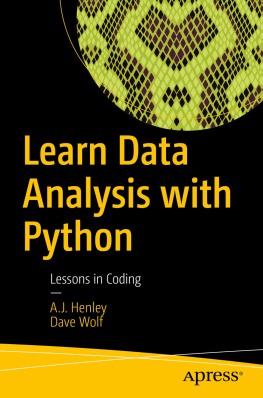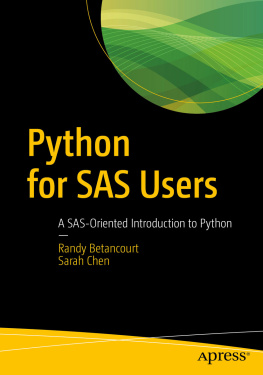PYTHON
2 BOOKS IN 1
Dive into Data Science and learn how to master Python Programming and other Coding Languages in use today
STEVE GEDDIS
Copyright 2020 - All rights reserved.
The content contained within this book may not be reproduced, duplicated or transmitted without direct written permission from the author or the publisher.
Under no circumstances will any blame or legal responsibility be held against the publisher, or author, for any damages, reparation, or monetary loss due to the information contained within this book. Either directly or indirectly.
Legal Notice:
This book is copyright protected. This book is only for personal use. You cannot amend, distribute, sell, use, quote or paraphrase any part, or the content within this book, without the consent of the author or publisher.
Disclaimer Notice:
Please note the information contained within this document is for educational and entertainment purposes only. All effort has been executed to present accurate, up to date, and reliable, complete information. No warranties of any kind are declared or implied. Readers acknowledge that the author is not engaging in the rendering of legal, financial, medical or professional advice. The content within this book has been derived from various sources. Please consult a licensed professional before attempting any techniques outlined in this book.
By reading this document, the reader agrees that under no circumstances is the author responsible for any losses, direct or indirect, which are incurred as a result of the use of information contained within this document, including, but not limited to, errors, omissions, or inaccuracies.
Table of Contents
Data Science from Scratch
with Python
A Crash Course for Beginners to Learn Data Analysis, Programming and Machine Learning with Python
STEVE GEDDIS
Introduction
Congratulations on purchasing Data Science from Scratch with Python , and thank you for doing so.
Data comes in different forms, but at an advanced level, it exists in three major categories. That is structured, semi-structured, and unstructured. Data scientists are experts responsible for gathering, analyzing, and interpreting large amounts of data to help businesses and organizations. Throughout all the chapters in this book, you are going to learn what the best data scientists know about Data analytics, Machine learning, big data, data mining, and statistics. Since Data Science is a multidisciplinary field, this book covers every critical concept that you must know to become a Professional Data Scientist.
Machine Learning uses the basics of Python programming language. Python is easy to learn and supports compelling typing. Python programs are very natural in that it is easy to understand and read them (thanks to the exclusion of braces and semicolons). Python programming language can run on any computer platform, ranging from Linux to Windows to Solaris, and Macintosh etcetera. The simplicity nature of Python is what makes it accessible and a perfect choice for computer programmers.
The following points give a highlight of its characteristics:
It is a highly readable programming language
It has a clean visual layout
Less syntactic exceptions
It is perfect for scripting and rapid application
It supports dynamic and elegant typing
It is interpreted easily
It is compatible with numerous platforms
This book will explore the field of data science using data and its structure. Also, it will describe high-level processes that one uses to change data into value.
You know that Data Science is a process. However, this does not mean that it lacks creativity. When you move into stages of processing data, from analyzing data sources to machine learning, and finally, data visualization, you will start to see that complicated steps are involved in working with raw data.
Every effort was made to ensure it is full of as much useful information as possible, and please enjoy it!
Chapter 1: Basics of Data Science
The arrival of big data resulted in the expansion of storage space. As a result, storage became the biggest hurdle for most enterprises. Besides this, both organizations and enterprises required to build a framework and develop a solution to store data. Therefore, Hadoop and other frameworks were developed to solve this problem. Once this issue is resolved, the focus shifted to how data could be processed. When it comes to data processing, it is hard not to talk about Data Science. That is why it is essential to understand what Data Science is and how it can add value to a business. This chapter will take you through the definition of Data science and the role it plays in extracting essential insights from complex data.
Why Data Science is Crucial
Traditionally, data is structured in a small size. This means that there was no problem if you wanted to analyze data. Why? There were Simple BI tools that you could use to analyze data. But, recent data is unstructured and different from traditional data. Therefore, you need to have advanced methods of data analysis. The image below indicates that before the year 2020, more than eighty percent of the data will be unstructured.
This data comes from different sources, such as text files, financial logs, sensors, multimedia forms, and instruments. Simple BI tools cannot be used to process this kind of data as a result of the massive nature of data. For this reason, complex and advanced analytical tools and processing algorithms are required. These types of devices help data scientists analyze and draw essential insights from data.
There are still other reasons why Data Science has increasingly become popular. Lets take a look at how Data Science is applied in different domains.
Have you ever thought of having the ability to understand the exact requirements of your customers from existing data such as purchase history, past browsing history, income, and age? The truth is that it is now possible. There are different types of data that you can use to train models and accurately recommend several products to customers effectively.
Lets use a different example to demonstrate the role of Data Science in decision making. What if your car is intelligent enough to drive you home? That would be cool. Well, that is how the self-driving cars have been designed to work.
These cars gather live data from sensors to build a map of its surroundings. Based on this data, the vehicle can make decisions such as when to speed down, when to overtake, and when to take a turn. These cars have complex machine learning algorithms that analyze the data collected to develop a meaningful result.
Data Science is further applied in predictive analytics. This includes places such as weather forecasting, radars, and satellites. Models have been created that will not only forecast weather but also predict natural calamities. This helps an individual to take the right measures beforehand and save a lot of lives. The infographic presented below shows domains where Data Science is causing a significant impact.
Definition of Data Science
The term Data Science is common nowadays, but what does it mean? What skills does a person need to have to be called a Data Scientist? How are predictions and decisions made in Data Science? Is there a difference between Data Science and Business Intelligence? These are some of the questions that you are going to find answers to in a short while.

